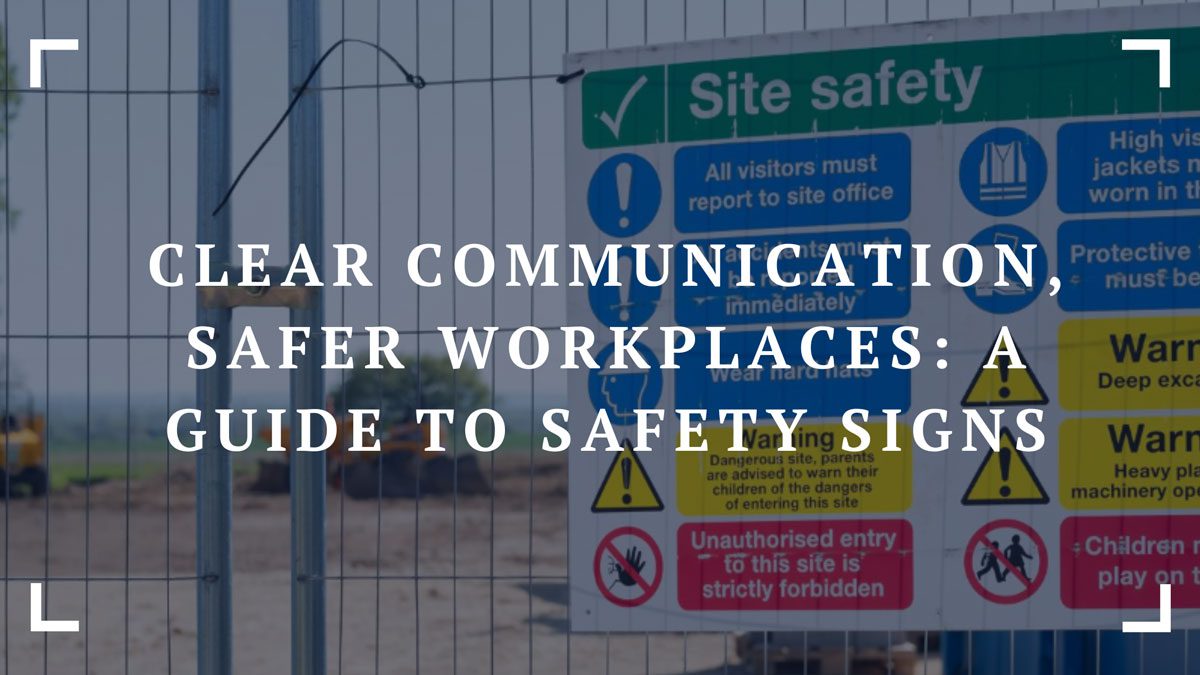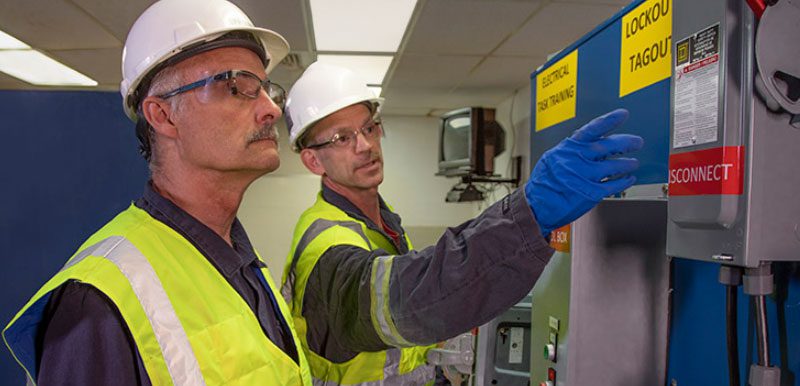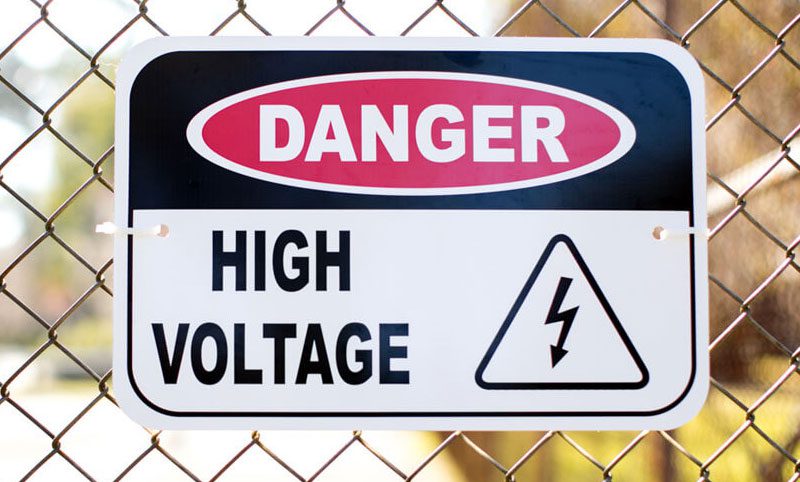In 2021, there were over 130 thousand serious injuries and 169 fatalities recorded in Australian workplaces. The number seems staggering, but it has gradually declined since the onset of stricter workplace safety regulations. In this respect, the widespread use of signage warns employees and visitors of the potential risks and hazards surrounding them.
The Australian Standards AS 1319:1994 regulates the use of safety signs. It also sets specific requirements for the design and classification of these important parts of the workspace. Several government agencies enforce their use, such as federal and state workplace safety bodies and the Department of Employment and Workplace Relations. Not abiding by regulations and guidelines can mean hefty fines. And in the case of injuries and fatalities, legal action.

Why The Need for Proper Safety Signage?
Safety signs have an essential role in any workplace. Besides being a legal requirement, their importance relates to a safe and responsible working environment. They have short, succinct, and clear-cut messages paired with simple images to convey essential information about potential hazards and dangers.
This can range from electrical risks, such as high voltage installations depicted with the appropriate electrical safety signs, construction, and mining signage that warn of moving vehicles or operating machinery, to Hazchem signs that inform of flammable or toxic substances nearby. This is just scratching the tip of the iceberg, and there are hundreds of different signs in as many industries. The ultimate goal is to ensure general safety for all and prevent accidents.
General Safety and Productivity

One of the more important functions of workplace signage is to keep employees alert and aware. Workplace safety and security done right also means employees feel valued and are more productive when their general well-being and safety are taken into account with clear-cut and managed measures and appropriate signage used in the right places.
Preventing Accidents, Incidents, and Injury
The correct use and placement of safety signage also reduce the likelihood of injuries and accidents. Most of the reported cases are avoidable, but this requires enforcing proper communication about potential threats to personal and general safety. Employees are more aware of workplace hazards when these are highlighted with signs and will respond promptly and routinely when supplied with the right information when an accident or incident does occur.
Employee and Visitor Education

Signs have an educational value, and for new employees and visitors, they are often the first things they see. They warn of imminent danger, prohibited actions, precautions that need to be taken, and instructions in the event of emergencies. These effective devices also inform of mandatory measures when working in certain high-risk settings, as well as general safety information, such as the location of fire extinguishers and the nearest exit.
What Types Are There?
Workplace safety signs are standardised and largely the same throughout the world. They use four main colours, red for danger, yellow for caution, blue for mandatory practices, and green for general safety information. And they can be classified as danger, prohibition, warning, mandatory, emergency, and fire types.
Danger Signs

These are used for marking an extremely hazardous situation that if not avoided will result in death or serious injury. The “DANGER” symbol is in white letters against a red oval background and set in a black rectangular box. Black text on a white background provides more information. Typical electrical safety signs used to warn of dangerous situations, items, and premises include: “Danger. Overhead Powerlines” and “Danger. 415 Volts”
Prohibition
These denote actions that are not permitted. They have a white background with black text and a red circle with a line through an image showing a specific action. Examples include: “No Entry” to restrict access to certain areas, and “Look Up and Live” when getting too close to powerlines.
Warning

This signage is used to indicate a severely hazardous situation that can result in serious injury. This can be a warning symbol in black, the recognisable exclamation mark in a black triangle, set against a yellow background. This can be used on its own, or in conjunction with appropriate wording where necessary. Instances are: “Machine Starts Automatically”, “Welding in Progress” and “Caution: Battery Charging Area”. Related are Caution signs with capitalised wording in black, and a pictogram within the triangle depicting the hazard.
Mandatory
Where there’s a need to communicate important information, such as instructions that must be carried out, mandatory signage is used. This is often a white pictogram or symbol on a blue circular background or just black lettering on a white background. Like warning types, these too are usually set vertically to increase awareness and legibility. A common example is: “Protective Clothing Must be Worn”.
Emergency and Fire Signs
The first type conveys safety information in emergencies, such as “First Aid” or “Emergency Assembly Point”, and consists of a white symbol and wording on a green background. The second is with white symbols, with or without lettering, and on a red background. These are used to indicate the locations of fire alarms and fire-fighting equipment.
Materials, Visibility and Regulatory Compliance
Choosing the right signage for your business will largely depend on the types of hazards and risks that are potential threats to employees and general safety. This means there will be several types of signs across the premises. Careful positioning is one thing to think about. Another is getting signs in the right materials, and in the right size to ensure that are easily visible and pass on their message.
The materials the signage is made of means they’ll last in harsh working and industrial conditions. The most common are vinyl, PVC plastic, Colorbond steel, and aluminium. Permanent vinyl has a strong adhesive and is often used in equipment and machinery labelling.
Removable vinyl is ideal for temporary uses, as the signs and labels can be removed and reused. Similar are magnetic labels stuck to moving vehicles and machinery. There’s more durability in PVC plastic labels, and these utilise different printing techniques to ensure they last in harsher conditions.
Signage seen outdoors or in extreme working conditions is made either of etched Colorbond steel or aluminium. They’re built to higher standards and in thicknesses that resist impact, heat, UV radiation, rust, chemicals and liquids. Most of these are mounted on posts or overhangs and are often supplied with the appropriate mounting hardware.
Sign visibility and placement are part of the regulatory guidelines set out in the AS 1319:1994. This implies symbols should have a minimum sight distance of 15mm per metre and that uppercase text has a minimum viewing distance of 5mm per metre.
In addition, low-lit areas are required this to be increased by 50 per cent. It is recommended all signage be in the light of sight, without any obstructions, and maintained in good condition. Industrial locations are advised to have double-sided signs where possible and placed in a vertical plane.


